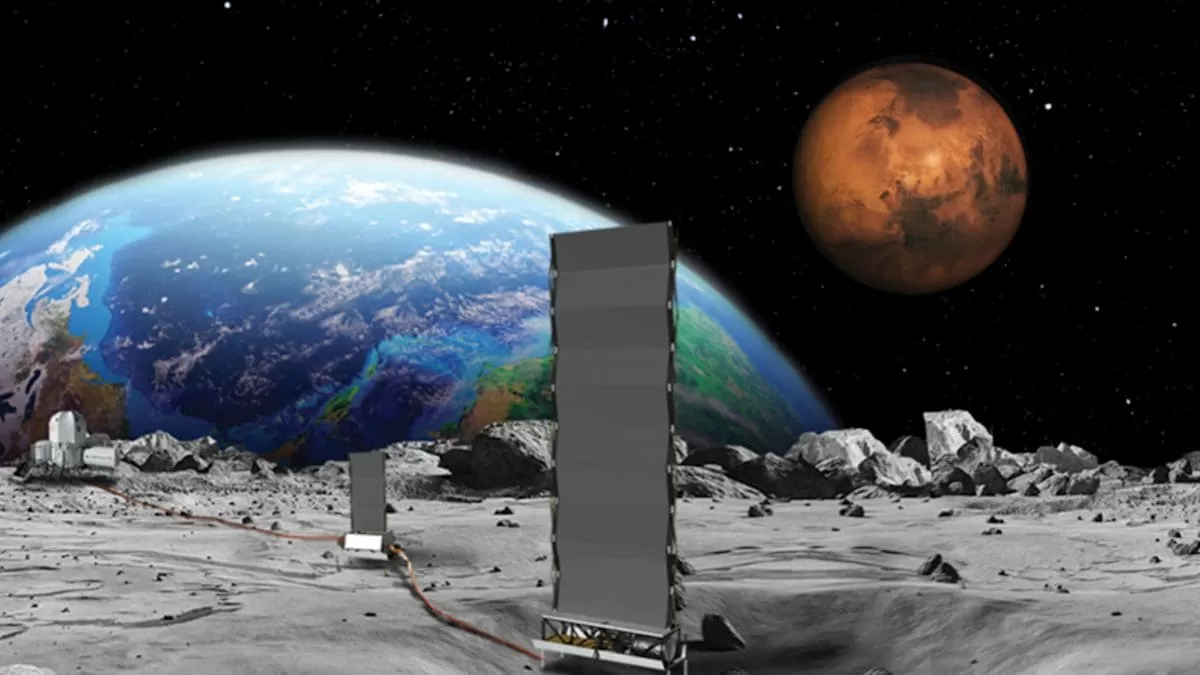NASA is accelerating its plans to deploy a 100-kilowatt nuclear reactor on the Moon by 2030, a move that could have groundbreaking implications for future space exploration. According to interim head Sean Duffy, this reactor would provide steady power during the long lunar nights and help secure vital resources at the Moon’s south pole. This ambitious project has also sparked a “moon race” between China, Russia, and the United States, adding an exciting element of competition to the already historic mission.
The idea of a nuclear-powered reactor on the Moon may seem like something out of a science fiction novel, but it is becoming a reality thanks to NASA’s determination and expertise. The primary goal of this endeavor is to ensure a constant and reliable power source for future lunar missions. Currently, solar power is the main source of energy on the Moon, but during the approximately two-week-long lunar night, there is no sunlight to generate power. This poses a significant challenge for extended stays on the Moon, as well as for the ambitious goal of establishing a permanent base on its surface.
The proposed reactor, called the Kilopower, is a compact and lightweight design that can generate enough electricity to power a small town. It uses nuclear fission, a process in which the nucleus of an atom is split to release energy, to generate heat that is then converted into electricity. Its compact size makes it ideal for space travel, and it is also designed to be safe and reliable, with no risk of a meltdown or explosion. With the Kilopower, NASA hopes to solve the issue of power supply in future lunar missions and pave the way for further exploration and discovery.
But the benefits of this nuclear reactor go beyond providing power. The Moon’s south pole is believed to have significant water-ice resources, which could be used for drinking water, growing crops, and even the production of rocket fuel. With the Kilopower, NASA plans to extract and utilize these resources, making the Moon a potential refueling station for future missions to Mars and beyond. This could significantly reduce the cost and risk of long-distance space travel, making it more feasible for humans to explore the depths of our solar system.
NASA’s ambitious plans have also sparked a “moon race” with China and Russia, who have also announced their aim to deploy nuclear-powered reactors on the Moon by the mid-2030s. This competition highlights the increasing interest and importance of lunar exploration and its potential benefits. However, NASA remains confident in its capabilities and experience, having successfully deployed numerous nuclear reactors in space before, including on the Apollo missions to the Moon in the 1960s and 70s.
The race to the Moon is not just between nations but also between different space agencies within the United States. With the recent announcement of the Artemis program, NASA’s goal is to send the first woman and the next man to the Moon by 2024. This program includes plans for a sustainable presence on the Moon, with the ultimate goal of sending astronauts to Mars. The Kilopower reactor is a crucial element of this program, providing the necessary power for extended stays on the lunar surface.
The deployment of a nuclear reactor on the Moon is not without its challenges and critics. Some have raised concerns about the potential risks and consequences of introducing nuclear power on another celestial body. However, NASA has assured that all necessary precautions will be taken to ensure the safety and success of this mission. The benefits and potential for groundbreaking discoveries far outweigh the risks, and NASA is committed to making this a reality.
As we look to the future of space exploration, the deployment of a nuclear reactor on the Moon marks a significant milestone and a giant leap towards pushing the boundaries of human knowledge and capabilities. It is a testament to the ingenuity and determination of the human race and a reminder of the endless possibilities that lie beyond our planet. With NASA’s accelerated plans and the “moon race” heating up, we can expect an exciting and historic decade ahead, paving the way for further advancements and discoveries that will shape our future in space.

